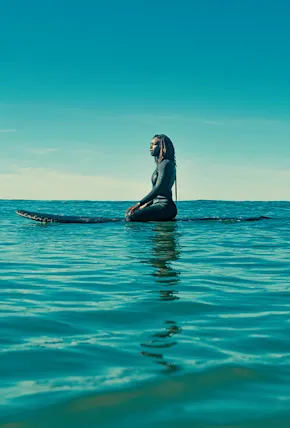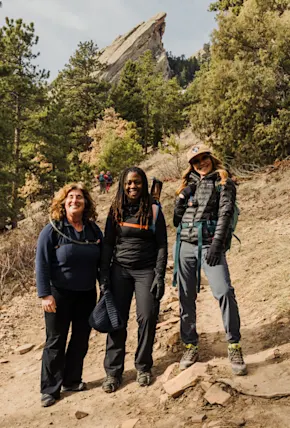Full Circle Everest was formed in 2021 by lifelong climber and outdoor educator Phil Henderson. Noting that historically, there has not been much representation of Black, Indigenous or persons of color (BIPOC) in the world of alpinism, Henderson and the other 10 members of the team joined together with hopes to change that. When the seven members of their expedition party reached the top—all who set out on the summit push—they undoubtedly succeeded.
Reaching Everest's summit is always impressive as a feat of physical and mental endurance, but Full Circle Everest’s achievement goes beyond that by drawing attention to how marginalized communities have been barred from the climbing industry for many generations. In this regard, the numbers speak for themselves, but as an overlooked (or ignored) issue, there's certainly a lot more to say.
To learn more about the physical experience and significance of the expedition, we recently sat down with Full Circle expedition team photographer Evan Green. As an avid backpacker, cyclist, climber, and snowboarder, he's no stranger to the mountains. And as a celebrated photographer and filmmaker, making images in trying conditions isn't new to him either—he returned from the Everest expedition with a summit under his belt and plenty of stories to tell, both visual and verbal.
Below, Green talks about how he came to join the team, what it was like making photographs at 29,000 feet, and what comes next for the Full Circle Everest team.

Photo by Graham Hiemstra
How did you find yourself on the Full Circle Everest Expedition?
Phil [Henderson] had called me about a year ago about this project and said he was putting it together and invited me to get involved. I was initially just doing the social media stuff and helping out with the content side of everything. Then there were weekly Zoom meetings and I just kind of went with the flow and eventually I got to step in further and further—it evolved from there into eventually standing on the summit. So it went beyond the initial scope haha.
You've bagged plenty of fourteeners and have considerable experience climbing. What was your actual ice climbing and snow mountaineering experience prior to this?
I’d say kind of a lot. I do a lot of backcountry skiing and ski mountaineering. I got into that world of crampons and ice climbing, so that part felt pretty comfortable, just moving in the snow and dealing with everything.
Describe the route to summiting Everest. How much of the expedition was hiking and lugging gear versus mountaineering?
It was mostly hiking, I would say, especially if you consider the trek into Base Camp, which took us over a week. And then the icefall is kind of extreme hiking—there's definitely rappels and vertical sections where you're kind of climbing straight up but also it's just meandering through the ice.
After that, going from Camp One to Camp Two was just a death march in the sun. I think it was only two miles and it took me well over four hours. It's right before you put oxygen on. It's a thousand feet of elevation gain just straight up this valley so it seems very simple, but it was really hard.
From there it goes up to the Lhotse Face, but it's not so much climbing. Honestly, fourteeners training was great because you’re doing 4,000 feet per day, going uphill, and it’s not actually climbing, but it's also not just your standard hiking. The summit was just a snow climb for the most part. Some rocks and stuff at the top. The rock and the crampons was probably the most difficult thing—just the points sliding around in the shale, not the best footing sometimes.
What were the conditions like on summit day?
We had a really good weather day. At the top, the winds were relatively calm and it was sunny. It was pretty nice that there wasn't a storm coming in or anything to run from. So yeah, I think the weather really played a big part.
Tell us about your camera set up? Did you carry a camera to the top?
I brought a Sony A7 IV and I just took one lens for the whole summit push, the 28mm f/2 because it's pretty fast, pretty general—it’s just the best for documenting everyday life. The battery did die in the cold, but then I just put in my glove for a little bit and carried it around like that until I needed to take a photo. Then I'd put it back in.
Did you shoot with anything other than the Sony?
I [also] took a Canon EOS A2E—so reliable, and has the eye tracking auto focus from the '80s. I shot two rolls at Base Camp. I wanted to get higher, but then I already was carrying two cameras. I guess I could have committed to film. I didn't know how it was gonna do at zero degrees.
[Ed Note: Stay tuned for a full photo essay with Evan Green from Everest coming soon]














